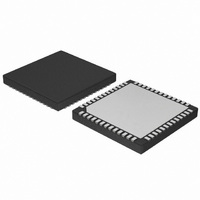AMIS49587C5872G ON Semiconductor, AMIS49587C5872G Datasheet - Page 29

AMIS49587C5872G
Manufacturer Part Number
AMIS49587C5872G
Description
IC MODEM PLC 50/60MHZ 52QFN
Manufacturer
ON Semiconductor
Datasheet
1.AMIS49587C5871RG.pdf
(55 pages)
Specifications of AMIS49587C5872G
Baud Rates
Selectable
Interface
SCI
Voltage - Supply
3 V ~ 3.6 V
Mounting Type
Surface Mount
Package / Case
52-TQFN Exposed Pad
Maximum Operating Temperature
+ 80 C
Minimum Operating Temperature
- 40 C
Modulation Type
.
Mounting Style
SMD/SMT
Operating Supply Voltage
+ 3 V to 3.6 V
Number Of Transmitters
1
Power Supply Requirement
Single
Package Type
QFN EP
Operating Temperature Classification
Commercial
Mounting
Surface Mount
Pin Count
52
Operating Temperature (min)
-40C
Dual Supply Voltage (typ)
Not RequiredV
Dual Supply Voltage (max)
Not RequiredV
Dual Supply Voltage (min)
Not RequiredV
Lead Free Status / RoHS Status
Lead free / RoHS Compliant
Data Format
-
Lead Free Status / Rohs Status
Compliant
6.4.3 Serial Communication Interface Physical Layer
Description
interface.
TXD: Transmit data output.
It is the data output of the AMIS- -49587 and the input of the
application micro controller.
RXD: Receive data input.
It is the data input of the AMIS- -49587 and the output of the
application micro controller.
T_REQ:Transmit Request input
Request for data transmission received from the application
micro controller.
6.4.4 Arbitration and Transfer
AMIS- -49587 and the application micro controller, the
AMIS- -49587 is chosen as the transmitting controller. This
means that when there is no local transfer, the AMIS- -49587
can initiate a local communication without taking account
of the application micro controller state. On the other hand,
when the application micro controller wants to send data
(using a local frame), it must first send a request for
communication through the local input port named T_REQ
(Transmitting Request). Then the AMIS- -49587 answers
with a status message.
6.4.5 Transfer from Application Microcontroller to
AMIS- -49587
local transfer, it must pull down the T_REQ signal. The
The following pins control the serial communication
In order to avoid collisions between the data sent by the
When the application micro controller wants to initiate a
IDLE (mark)
Start
t
BIT
LSB
D0
D1
Figure 25. Data Format
D2
http://onsemi.com
8 data bits
1 character
D3
29
BR0, BR1: Baud rate selection inputs.
These pins are externally strapped to a value or controlled
by the external application micro controller.
AMIS- -49587 answers within the t
message in which the application micro controller can read
if the communication channel is available. If the
communication is possible, the application micro controller
can start to send its local frame within the t
pull up the T_REQ signal as soon as the first character
(STX) has been sent. If the beginning of the local frame is
not received before the t
AMIS- -49587 ignores the local frame. At the end of the data
reception sent by the application micro controller on the
RxD line, the AMIS- -49587 sends a byte on the TxD line in
order to inform about the status of the transmitting <ACK>
(=0x06) or <NAK> (=0x15).
know the state of the AMIS- -49587, it has just to pull up the
T_REQ signal after the reception of the status message.
Table 28. BR1, BR0 BAUD RATES
Remark: If the application micro controller only wants to
D4
BR1
0
0
1
1
D5
D6
BR0
0
1
0
1
MSB
D7
SR
POLL
delay was issued, the
Stop
t
BIT
delay with the status
SCI Baud Rate
SR
19200
38400
delay. It should
4800
9600
IDLE (mark)










